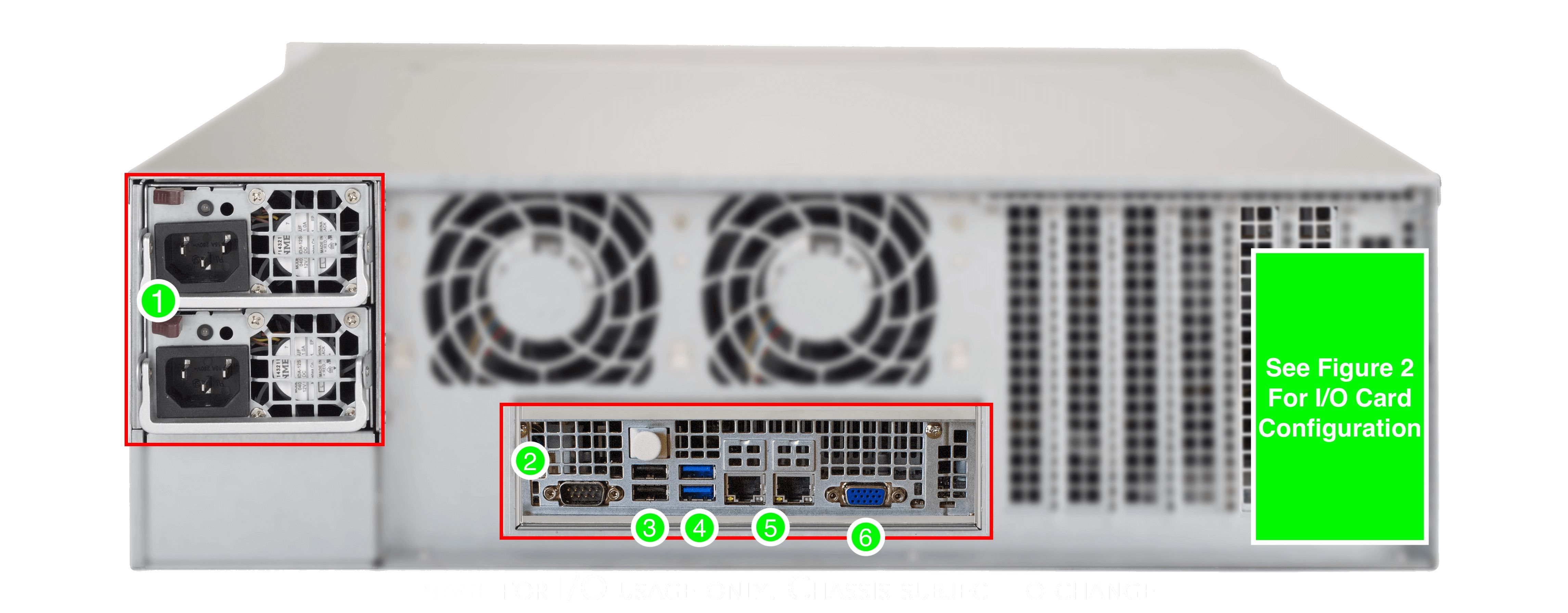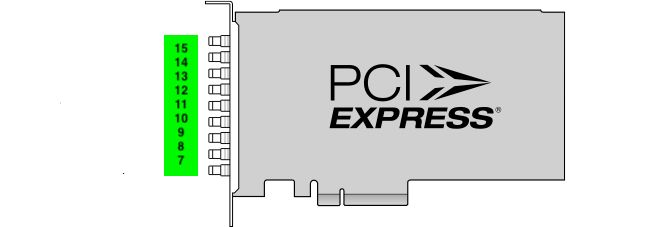VIO 4+ Setup Guide
Thank you for purchasing a VIO server from Cablecast Community Media! This guide will walk you through setting up your new server.
Prerequisites
Before beginning the installation, please make sure that you have the following resources available:
• An ethernet network connection
• A keyboard, mouse, and a VGA monitor
• Your existing A/V infrastructure (At least one video monitor, if you’re just testing)
Overview of Setup
There are three parts to setting up your Cablecast server: Physical Setup, Software Setup, and Testing.
Physical Setup : You’ll learn about the physical connections on the Cablecast server, and how to tie it into your existing infrastructure.
Software Setup : You will be taken through the steps necessary to configure the Cablecast software to communicate with your server.
Testing : Finally you’ll run some simple tests to make sure the Cablecast server is correctly configured and ready to use.
Sound like a plan? Let’s get started!
Part I: Physical Setup
Your Cablecast server should come with the following items in the box:
AC power cables : Powers the Cablecast server.
Server : The Cablecast server itself.
Physical Connections
On the back of your Cablecast server, you’ll see several ports. Please refer to the diagram below for connections on your VIO 4+ server.
System Connections
All of the Cablecast servers share some basic system connections:
1. Connect a keyboard and mouse via the USB ports.
2. Connect a monitor. The monitor is required for server setup, and we recommend that it remain connected. All Cablecast servers have at least a VGA
port, and this is what we recommend connecting up to the KVM in your rack.
3. Connect the Cablecast server to the network via one of the ethernet network
jacks.
4. Connect the Cablecast server’s power supply to an AC power source using
the provided AC power cables.
AV Connections
Next, you will connect the Cablecast VIO 4+ server to your video infrastructure.
The VIO 4+ ships in a 4x4 configuration (four inputs and four outputs). This is a locked configuration for this server and there are no other combinations of I/O configuration. The connectors on the VIO 4+ are Micro-BNC. In the box with your server, you will find adapter cables that will allow you to go from Micro-BNC to Standard BNC. The ports on the I/O card are numbered from the bottom up. (See Figure 2 Image Below)
- Connect a cable from Port 1 to an input on your SD/HD-SDI routing switcher.
- Connect a cable from Port 2 to an input on your SD/HD-SDI routing switcher.
- Connect a cable from Port 3 to an input on your SD/HD-SDI routing switcher.
- Connect a cable from Port 4 to an input on your SD/HD-SDI routing switcher.
- Connect a cable from Port 5 to an output on your SD/HD-SDI routing switcher.
- Connect a cable from Port 6 to an output on your SD/HD-SDI routing switcher.
- Connect a cable from Port 7 to an output on your SD/HD-SDI routing switcher.
- Connect a cable from Port 8 to an output on your SD/HD-SDI routing switcher.
- Connect house tri-level or analog blackburst to REF Port (Bottom Port, See Figure 2 image below)
FIGURE 1: The Cablecast VIO4

FIGURE 2: I/O Card

- AC Power
- RS232 COM port (male)
- USB 2.0
- USB 3.0
- Ethernet
- VGA
- Reference In
- Output 1
- Output 2
- Output 3
- Output 4
- Input 1
- Input 2
- Input 3
- Input 4
Powering On
Once your Cablecast server is connected, power on the server by pressing the power button on the front of the unit. The unit will boot and go through Windows System Preparation steps. You will need to create a Windows user/pass, and once into Windows be ready for both IO configuration (if needed) and Cablecast software setup. Be sure to note your username and password, as Cableast support does not have a way to recover the credentials other than to reimage a system.
Also note that if you plan to do network playback across servers or configure a NAS to work with video servers/VOD, the Windows credentials across the servers need to be the same.
Setting up Audio Normalization
Use the guide to setup Device resolution and Audio configuration:
Audio Normalization and processing in Cablecast 7.6
Cablecast CG Background Audio
To learn more about Background Audio in Cablecast CG, follow this link to our KnowledgeBase article for Setting Up Background Audio .
